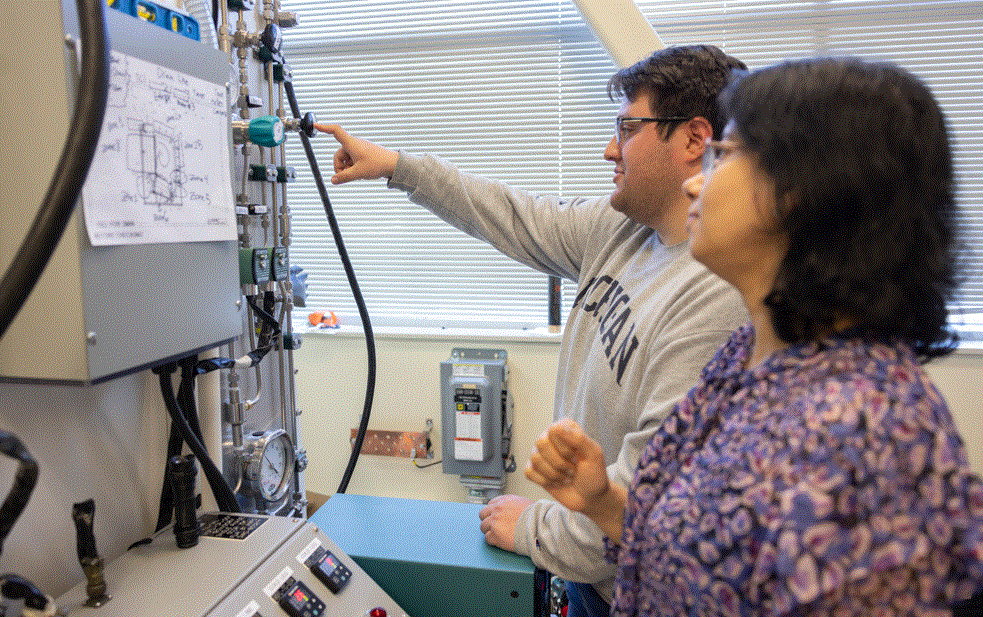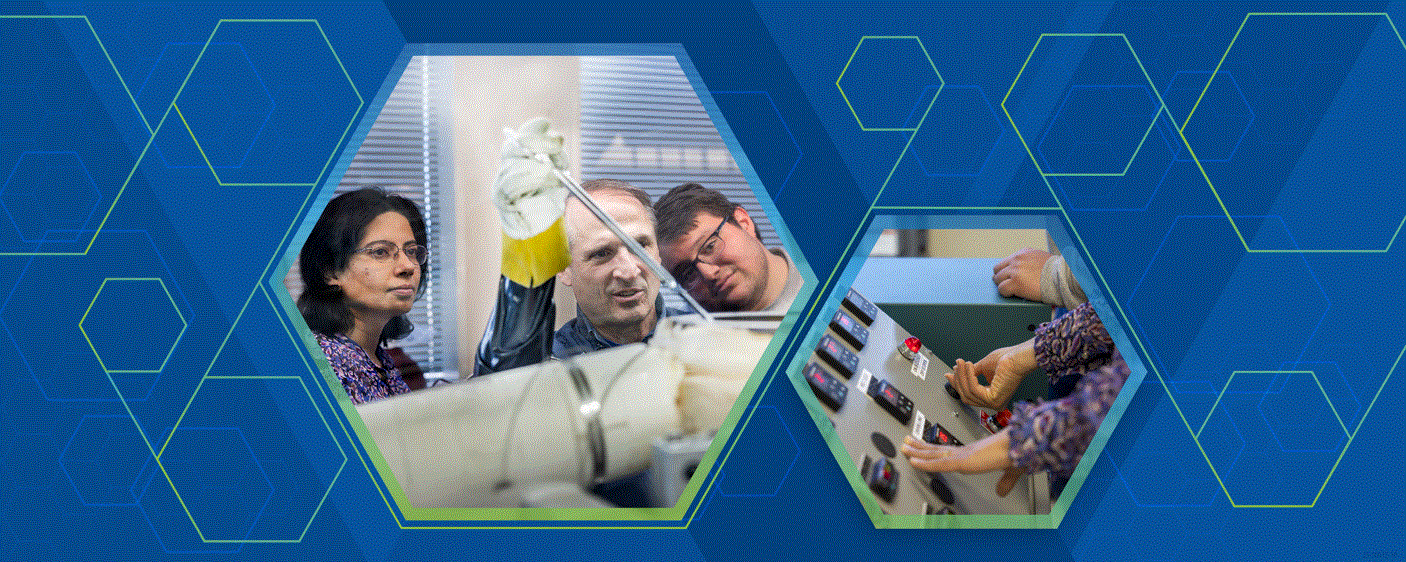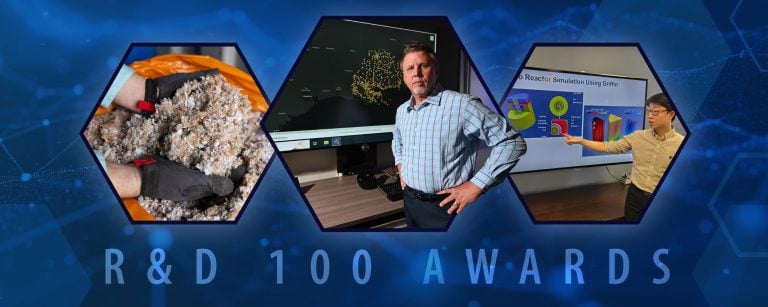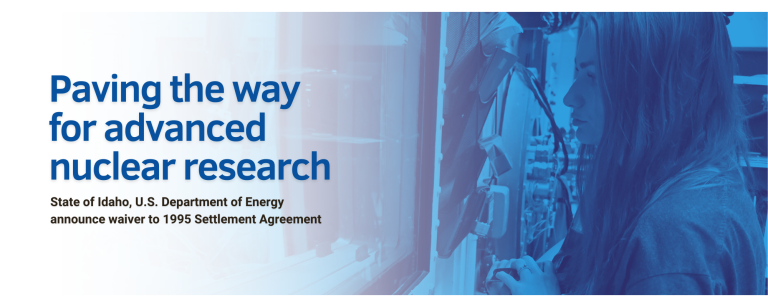To meet energy demands and reestablish the nation’s energy dominance, U.S. companies are developing several types of advanced reactors.
One type of advanced reactor, a molten salt reactor, uses fuels dissolved in molten salt coolants instead of the solid fuels used in traditional nuclear reactors. These reactors feature enhanced safety features and high temperatures, which will offer utilities more flexibility in the form of efficient heat and electricity.
Now, a new scientific testing capability at Idaho National Laboratory (INL) will help commercialize molten salt reactors.
Unlike similar systems, the Molten Salt Flow Loop Test Bed allows for continuous, real-time monitoring and analysis that makes molten salt research much more efficient and effective.
INL researchers recently conducted an inaugural run of the test bed to evaluate the performance of chloride-based, molten salt technology.
“Most test loops focus on testing the structural materials,” said Ruchi Gakhar, lead scientist at INL’s Advanced Technology of Molten Salts department. “After a few hours of operation, they dismantle the loop to study how the materials have degraded.”
“In contrast, our loop at INL is unique because it serves as a test bed for advanced electrochemical sensors and bubbler instruments,” Gakhar continued. “These instruments allow us to monitor and investigate material performance in real-time while the loop is still operational. This approach has not been implemented or explored in flow loops at other institutions.”
Chloride salts are known to be inexpensive and great at transferring heat, which is why they’re an attractive option in molten salt reactors. However, scientists must make sure these salts can flow smoothly and do not damage the reactors they cool. That’s where INL’s new test bed comes in. It allows researchers to see how these salts behave in a flowing environment.
INL is part of a team developing the Molten Chloride Reactor Experiment, which will demonstrate the first operational fast spectrum molten salt reactor in the world. In collaboration with Southern Company and TerraPower, INL will synthesize and handle the fuel salt, load and operate the reactor, and perform all post-operation deactivation and disassembly work.
The molten salt flow loop will offer insights to better understand how materials corrode and how sensors perform at high temperatures. “This will be a big step toward building (molten salt reactors) that last longer and require less maintenance, reducing costs and improving reliability,” said John Carter, manager of the Advanced Technology of Molten Salts department.
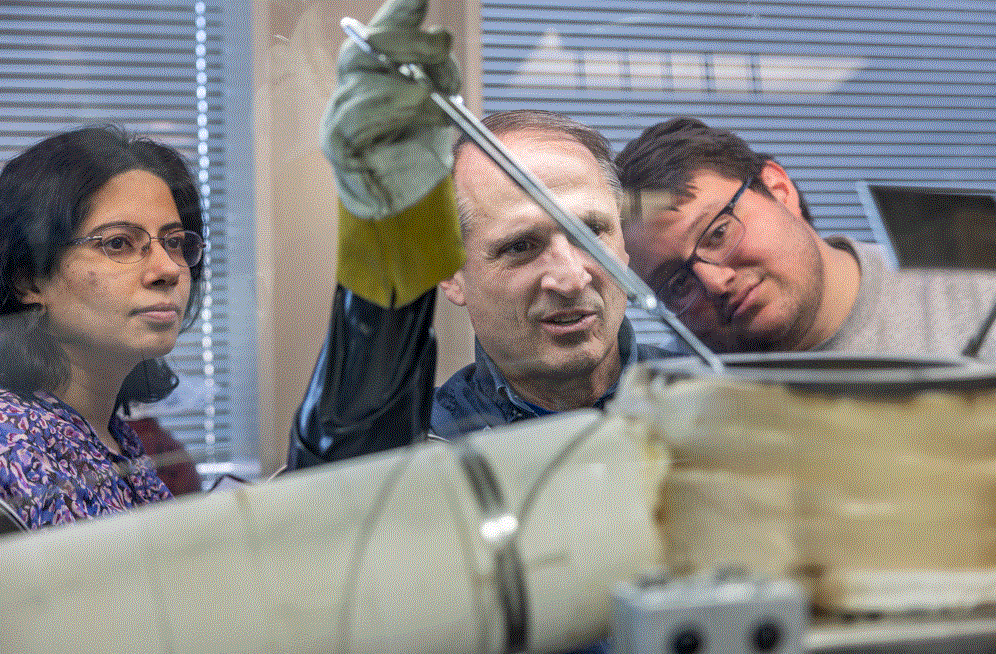
How it works
Just as a car radiator circulates coolant through the engine to absorb and dissipate heat, ensuring the engine runs smoothly without overheating, the molten salt flow loop at INL circulates molten salt through a closed system.
“In the same way a radiator is crucial for a car’s performance, our molten salt flow loop is vital for (molten salt reactor) performance,” said Gakhar, who spent three years on a team developing the system. “The loop allows us to maintain precise temperature control and heat transfer.”
The system is made from stainless steel, like the metal used in kitchen sinks, but much tougher.
There’s a special mixture of salts called lithium chloride-potassium chloride inside the system. To keep the salt mixture pure, an inert (non-reactive) gas is used. This gas fills the space above the salt in various tanks, preventing contamination — just like how a radiator cap keeps dirt out of a car’s coolant.
Special structures in the system allow researchers to test how different materials wear down over time. They can insert and remove samples without stopping the flow, kind of like checking the oil in your car without turning off the engine.
The system has five electrode ports that allow scientists to perform electrochemical experiments. This helps them control the chemical state of the salt and monitor corrosion in real time, like how sensors in a car monitor engine health. The bubbler dip-tube ports measure things like fluid density, surface tension and the level of the molten salt. There are special devices inserted into the system to measure temperature changes in different areas. It’s like how a car’s sensors check the level and quality of the coolant.
This helps scientists understand heat transfer properties.
“This work will accelerate us toward our advanced energy future,” said Carter. “It will enable development of advanced corrosion-resistant materials, sensors and instrumentation for ultra-high temperature application.”
